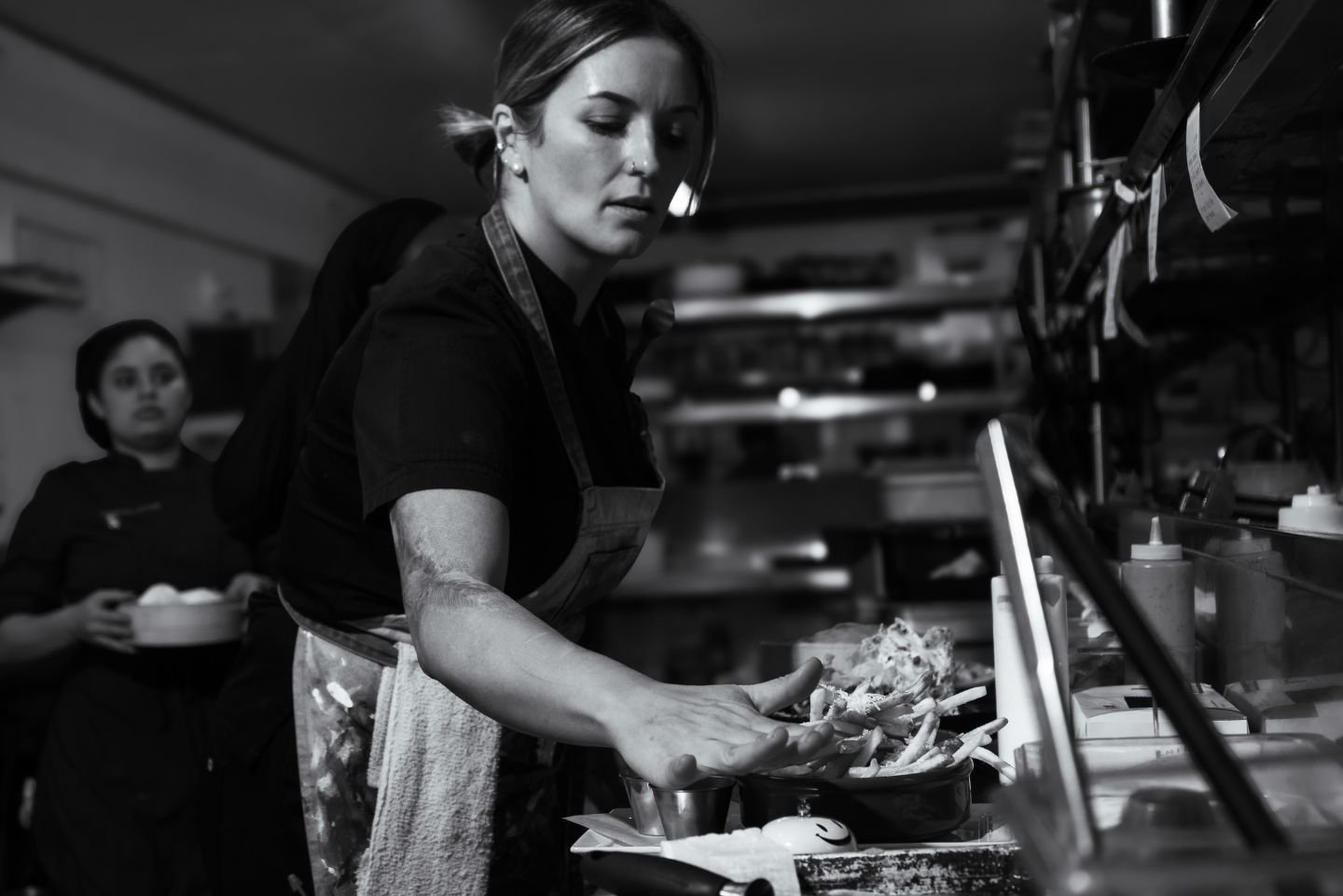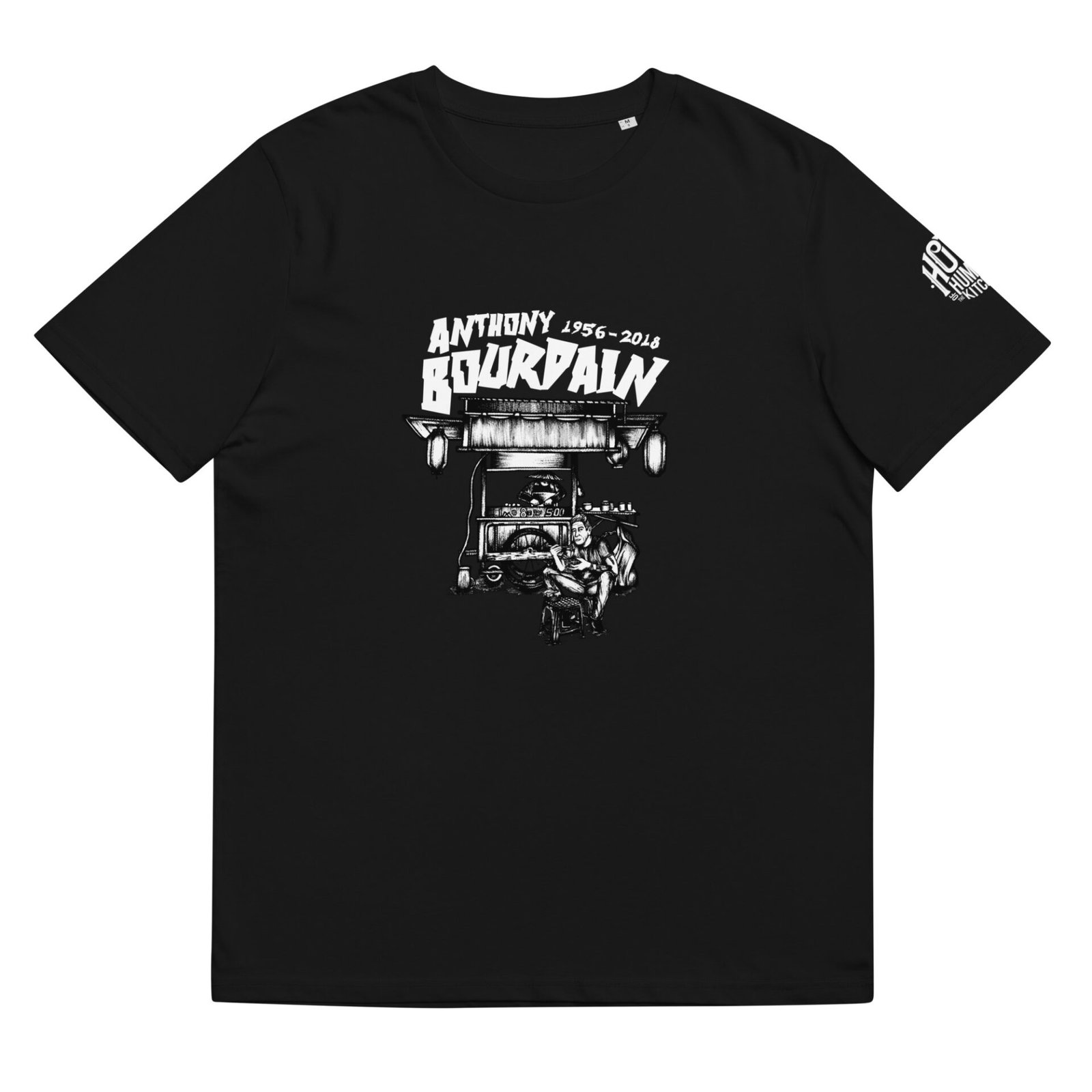Turning PR into Culinary Art
Foraging, Catering, and Embracing the Chef Within

Valeri Fuentes
Back in Venezuela I was a PR girl—deep in campaigns, deadlines, and lots of coffee, but always great food from my grandma. I never thought of cooking as more than tradition or a way to pamper my family until something shifted. I wanted out—not just of the office, but the country. I craved movement and reality. I wanted to backpack around the world, so I enrolled at the Caracas Culinary Institute. Cooking seemed perfect—a skill that could take me anywhere.
Buenos Aires was my first stop. I took a job in a Japanese kitchen, thinking it’d be temporary. But the chaos, the discipline, the rhythm of the line—I fell hard for it.
Then came Patagonia. A tiny town with eight streets. I worked at a hotel where ingredients were scarce—whatever didn’t sell in the nearest city, we got. Tomatoes, onions, scraps. So, I started foraging. I found an old, hand-painted book on edible plants and took it into the mountains. Herbs, mushrooms, roots—I used them all. We built an entire menu from the land. That’s the kind of cooking I love—the kind that forces you to adapt, be resourceful, and create something out of what’s in front of you.
Later, when I moved to the U.S., catering became my world. One day, I was cooking in a church. The next, a rooftop. Then, a museum, a street corner, a party in the hills. Every job was different, unpredictable. You learned to improvise and stay on your toes.
Now, I’ve shifted back to restaurant life, cooking inside @pamm, the art museum of Miami. It feels like a chance to connect food with art. I may not paint on canvas, but I know I can paint on a plate while connecting with the culture and local ingredients. The kitchen is evolving. Women are no longer just pastry chefs; we are redefining what it means to be a chef. I love the discipline but reject the notion that greatness requires suffering. The old ways—enduring abuse and collapsing from overwork—don’t fit the kitchen I want to create.
Secret Sauce
- What’s the most unexpected ingredient you’ve ever worked with, and how did it change your perspective on cooking?
When I lived in Patagonia, I had to cook! It’s a type of Patagonian llama. I had no idea how to cook it, but by asking the locals in the village where I lived, I managed to learn. I will never forget that its meat has a very distinctive and strong smell. Also, during that time, I was cooking with a local mushroom called “Pan de Indio.” It has a pretty neutral taste and a shape that’s not ideal for agoraphobics, haha!
- What’s your “guilty pleasure” meal?
Jajaja I love eating fusilli pasta with Venezuelan-style bolognese, fried sweet plantain, red pepper flakes AND mayonnaise! Just thinking about it makes my mouth water!
- A food trend that you hate and why?
I’m a bit tired of people using red cabbage to make colorful dishes! Its flavor isn’t always the most friendly for every recipe.
- What’s the craziest shift you’ve ever worked in the kitchen? What happened, and how did you manage to get through it?
When you work as a catering chef, you often have super long shifts because you combine the food prep shift with the event shift. And if multiple events happen on the same day, it’s absolute madness! My longest shift was 21 hours!
- What’s the most unusual or funny cooking mistake you’ve ever made in the kitchen?
It was one of my first events as a Chef at a Catering Company. I was focused on all the details, making sure everything went well (the client was very picky). We arrived at the party (which was an hour and a half away from the production kitchen), and it wasn’t until we were ready to start reheating the food that we realized we had left all the food at the commissary!!!
- What’s an underrated ingredient and why?
I think cassava is a wonderful and underrated ingredient. I could also say that “Aji dulce” is a delicious ingredient that very few people know about or use outside of Latin American borders.
- What’s a must-try dish from your kitchen or the one you’re proudest to have prepared?
I’m really proud of the “Mojito Tiradito” because not only is it delicious, but it also tells a beautiful story about the origin of an artist named José Parla. This dish was inspired after seeing Parla paint live, one of his pieces where he captured Cuba and Miami. I’m also proud of one of the brunch dishes called “Caracas Egg Benedict,” which is a fried beet arepa with poached eggs, chive hollandaise, and pickled red onions. Not only is it beautiful and delicious, but it also invites people to try the arepa, which is something I’m really proud of!
- What You Love and What I Hate About Chef Culture?
I love the discipline and the idea that to survive in this career, you must have true vocation and passion. It’s something beautiful, because having a calling isn’t easy—not everyone has it. So many people work in jobs they don’t truly enjoy or love. In the kitchen, you might get by without passion, but to really thrive, to be good, and to find meaning in your work, you must love what you do. That’s what makes cooking so special to me.
On the flip side, I hate the notion that to be a chef, you have to be a slave—enduring grueling hours, little sleep, and even mistreatment. I understand that hardship is part of the tradition, but just as the industry is evolving for women, the way chefs are treated is changing too. In the past, kitchens were toxic environments where you’d be beaten, shouted at, and abused. I’m glad that’s shifting because we’re realizing you don’t need a yelling kitchen to do great work. That transformation in chef culture is something I truly celebrate.
- Is the role of women in professional kitchens changing?
100%, it’s changing, it’s changing. I feel like it’s been very difficult. I sometimes feel forced to go full throttle, operating non-stop. We’re compelled to tap into masculine energy because it seems to be the only way to be on the same level and be taken seriously. But I do believe it’s changing. In fact, one of the things I’d eventually love to do is launch a project or host a special dinner—something where every chef is a woman.
I think it’s beautiful to empower women in the kitchen. You know, before, women were mostly limited to being pastry chefs. Now, I believe we’re all on equal footing. There are incredible women chefs out there who are just as impressive as their male counterparts. And thank God, things have changed.
About Your City!
Miami, USA
- If Anthony Bourdain or a chef came to your city, what would be the perfect tour itinerary from breakfast to dinner?
My country has changed a lot since I left over 10 years ago, and it’s very possible that many of the places I knew back then no longer exist. But if I had to recommend a place to Bourdain, I would take him straight from the airport to my grandmother’s house!
- Recommended Places in your city:
- Food Markets: Mango tree in Hollywood, Fl
- Cultural Events: Topsfield Fairgrounds
- Popups: Sandoches
- Street Food/Food Trucks: Dijon hot dogs @diyonhotdogs
- Restaurants: Alinea Chicago , Leku and Verde.
- Bar: Doya.
- Cafes: Tatte Boston





